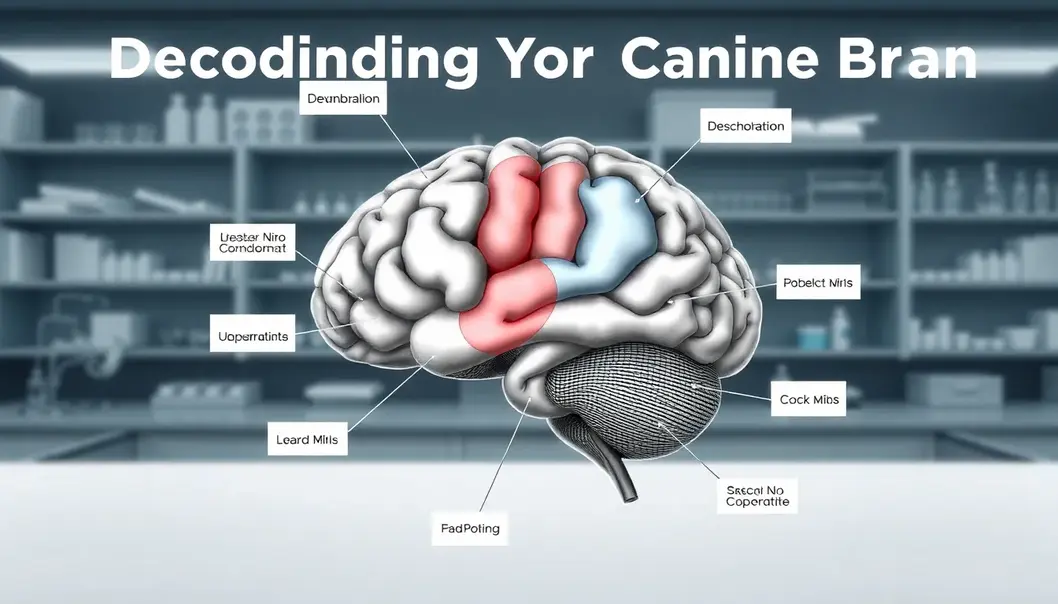Understanding your dog’s behavior is not just about commands and cues—it’s an exploration of psychology and biology. Whether it’s a wagging tail or a bark, each action has a purpose, often rooted in both instinct and learned behavior. Busy professionals looking to deepen their connection with their furry companions can benefit from a scientific approach. This article delves into the mechanisms of canine behavior, providing insights that save time while enhancing your bond with your dog. From everyday reactions to nuanced expressions, discover the science behind your dog’s behavior and find practical solutions for better interactions without overwhelming your schedule.
Understanding the Canine Brain

When it comes to understanding our canine companions, delving into the structure and function of a dog’s brain can provide profound insights. The canine brain, while sharing similarities with the human brain, is uniquely adapted to meet the needs of a species that has evolved alongside us for tens of thousands of years.
The most notable region in the canine brain is the olfactory bulb, which is significantly larger than in humans relative to brain size. This is a reflection of dogs’ incredible sense of smell. Dogs can detect a vast array of scents, which allows them to interact with the world in a way we often overlook. By recognizing and appreciating this, we can tailor our interactions with them, such as engaging them in scent-based games to provide mental stimulation when time is limited.
Moreover, understanding the limbic system is crucial. This complex network governs emotions and memories, playing a pivotal role in how dogs react to various stimuli. Events that seem trivial to us might trigger intense emotions in dogs. For example, a raised voice could register as a threat, impacting their emotional well-being. Thus, maintaining a calm, consistent tone when giving commands is essential.
The cerebellum, responsible for coordination, is also well-developed, reflecting the need for agility and balance. Recognizing this, activities that engage these faculties, like agility training or obstacle courses, can enhance a dog’s life satisfaction, especially for breeds known for high energy levels.
Understanding neural plasticity in dogs can guide how we approach training. Just like humans, dogs can learn and adapt through experiences. Engaging in positive reinforcement techniques can harness this plasticity, fostering better behavioral patterns and strengthening your bond.
For busy professionals, knowing these neurological facets can improve how you manage interactions with your pet. Short, consistent training sessions using positive reinforcement cater to dogs’ learning abilities. Furthermore, activities that stimulate scent tracking or agility can provide an outlet for their natural instincts, reducing misbehavior when you’re preoccupied with other demands.
As we move into exploring the behavioral psychology of dogs in the following chapter, integrating this understanding of the canine brain forms a foundation for deeper insights into their behavior, strengthening our relationships with these loyal companions.
Behavioral Psychology of Dogs

Dogs, much like humans, have complex psychological landscapes rooted in instincts, learned behaviors, and communication signals that reveal their thoughts and emotions. To better understand these animals, we turn to the field of behavioral psychology, which provides a framework for deciphering canine actions and reactions.
Conditioning is a foundational element in the psychological development of dogs. Classical conditioning, a term familiar to many, involves associating a neutral stimulus with a significant event. A classic example is Pavlov’s dogs, which learned to associate the sound of a bell with being fed, eventually salivating at the bell alone. For busy professionals seeking to train their dogs efficiently, leveraging classical conditioning can be highly effective. By coupling cues or commands with rewards, dogs can be taught desirable behaviors that align with household routines.
On the other hand, operant conditioning involves reinforcing behaviors with rewards or deterring them with consequences. When a dog sits on command and is rewarded with a treat, the likelihood of the sitting behavior increases. Meanwhile, if a behavior like chewing on shoes results in temporary isolation from social interaction, the tendency to engage in that behavior decreases. Understanding and applying these principles can make training sessions more successful and enrich the bond between dog and owner.
Instinct also plays a critical role in dog behavior. Many actions are driven by ingrained responses that have evolved over centuries. For instance, the herding of sheep by certain breeds or the guarding of territory are expressions of instinctual drives. Recognizing these behaviors as instinctual rather than misguided can help professional dog owners manage and direct such innate tendencies effectively.
In addition to understanding conditioned and instinctual behaviors, it’s crucial to appreciate how dogs communicate. While vocalizations like barking convey different messages, a significant portion of canine communication is non-verbal. Tail wagging, ear positioning, body posture, and facial expressions all offer insights into a dog’s emotional state and intentions. For someone managing a busy schedule, using consistent verbal and non-verbal signals can improve interaction quality with minimal time investment.
Ultimately, expanding our understanding of behavioral psychology in dogs enables us to foster healthier and more fulfilling relationships with them. By applying scientific principles of behavior and communication, we simplify our interactions and optimize the time shared with our beloved pets.
Final words
Unraveling the science behind your dog’s behavior offers valuable insights for building a stronger bond. By understanding both biological and psychological factors, busy professionals can interact with their dogs more effectively. Implementing these insights in everyday life not only saves time but also enhances the relationship with your dog, making each moment more rewarding.
Ready to deepen your understanding of your dog’s behavior? Join our online seminar for a comprehensive guide.
Learn more: https://canineinsights.com/seminar
About us
Canine Insights offers expert-led online seminars to educate dog owners about the science of canine behavior, providing practical strategies for bettering interactions with your pet.

